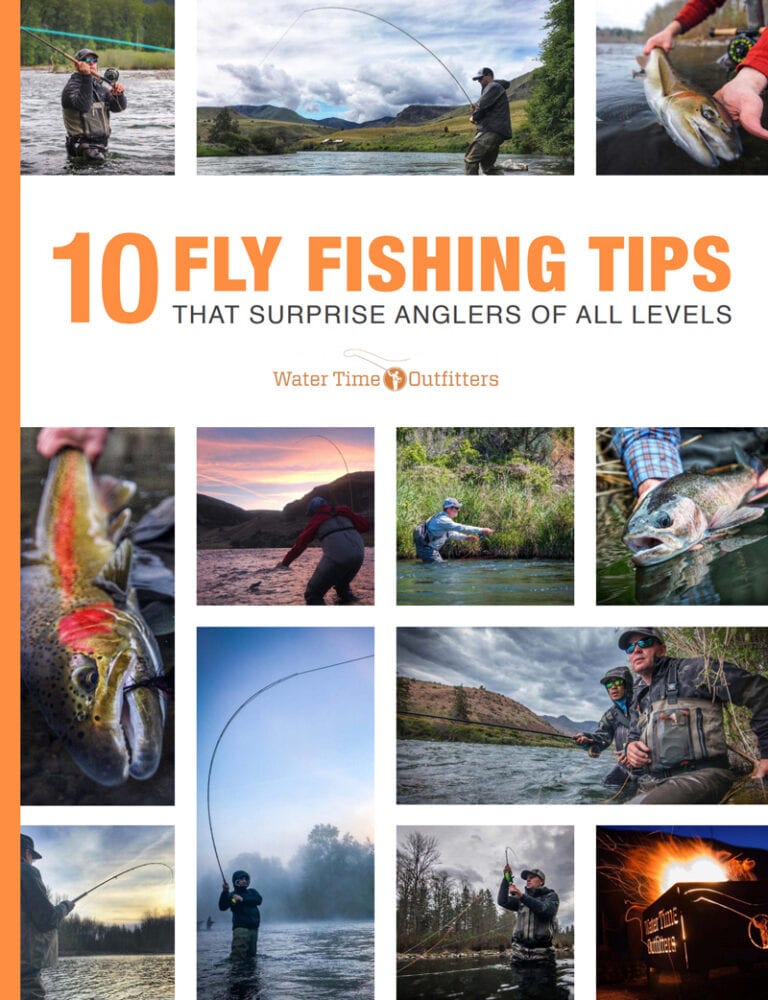Ten Tips for Deschutes Caddis Success
During the summer months on the Deschutes River below Pelton dam the main food source for feisty redband rainbow trout are caddis flies. Along the lower 100 miles of the Deschutes river there are a handful of species of caddis that live and thrive in the cool waters of this high desert river. Below the columnar basalt cliffs the emerald waters host a strong population of caddis that hatch each day from May through October. During the season the size, variety and density of these caddis change but a basic understanding of these moth like critters can help give you boat loads of rod bending success.
The main caddis we focus on during the summer months are the Green Sedge or Rhyacophila, the spotted Sedge or the Hydropsyche and the Saddle-Case Caddis or Glossosoma. These caddis have four distinct life stages: egg, larva, pupa and adult. Most species live in the river for about one year. A major portion of the life of a caddis is spent as a larvae which looks like a small worm.
There are a number of tricks that can help you be more successful with your time on the water during the summer caddis hatches. Below are some favorites that the Water Time Outfitter guides use to help their clients consistently get into fish on the Deschutes. Hopefully these tips will help you make the most of your water time.
1. Match your fly size correctly to the natural. Find hatched caddis that are along streamside foliage and grab one. Get a good look at that little guy and see that your fly pattern is close in color and size. It is easy to tie on a fly that is too big. For the Deschutes river our most common sizes are size 16 and 18.
2. Focus your effort on dry flies at the right time of day. Not that you can’t catch fish on dries all day long during the summer months; you can, but you will find more success at specific parts of the day. Prime times to fish dries are during the mid morning hours from 10am – around 2 pm. Often from 3-6 there is a lull in dry fly action. Then the last 2 hours of the day (depending on the weather) the best dry fly action of the entire day is often had. The last 20-30 minutes before dark can be a frenzy!
3. Fish around structure and shade. Big rainbows are smart and if they live on the Deschutes they have survived the legendary hunter in the sky – the osprey. There are so many osprey on the river now that you can see a different nesting pair about every mile of river. That means rainbows are smart to their enemy from above or they are dinner!
4. Keep your fly floating. If you can’t see that dry fly it’s very difficult to be effective, especially if you are presenting the fly upstream. When you can’t see your fly present close with an across current present and you’ll feel the take better (good to do in low light right at dark).
5. Polarized glasses for back eddy fishing. Sipping rainbows working the suds are a fine target mid-day. Often food piles up in the eddies more than any place on the river. Big rainbows are well aware of this food smorgasborg and they are there. We like to say “foam is home”, meaning where you see foam pile up on the water you will also see lots of food.
6. Casting accuracy for rising fish. Don’t line big rainbows that are rising. False cast to the side and get the right line length then present your fly. Your first false cast over a big fish throws spray off your line. Do this to the side of the fish so spray of water droplets doesnt come down right on a feeding fish. It also helps to keep a shadow from crossing over a spooky fish.
7. Emergers – fish deep pupa emergers when nothing is happening on the surface and before the evening hatch to keep the action going during dry fly lulls. When nothing is happening on the surface it might be because there is so much food in the drift the trout have switched their focus.
8. Use both a dry and an emerger dropper during the hatch will get you more results.
9. Bow and Arrow casting under the trees for the biggest fish. The best way to get to big rainbows under the trees. Try it, you might be surprised.
10. Trim the bottom hackle on your dry flies (like Elk Hair Caddis) so they ride on the surface correctly more of the time and sit a bit lower in the surface film.
To fish with the guides who’ve been doing it for over 20 years come join Water Time Outfitters and Rob Crandall on the Deschutes River. See more information at: watertimeoutfitters.com We offer single and multi-day float trip adventures on the wild and scenic Deschutes River canyon. Trout and steelhead fishing are our favorites – come see why!

.jpg)
